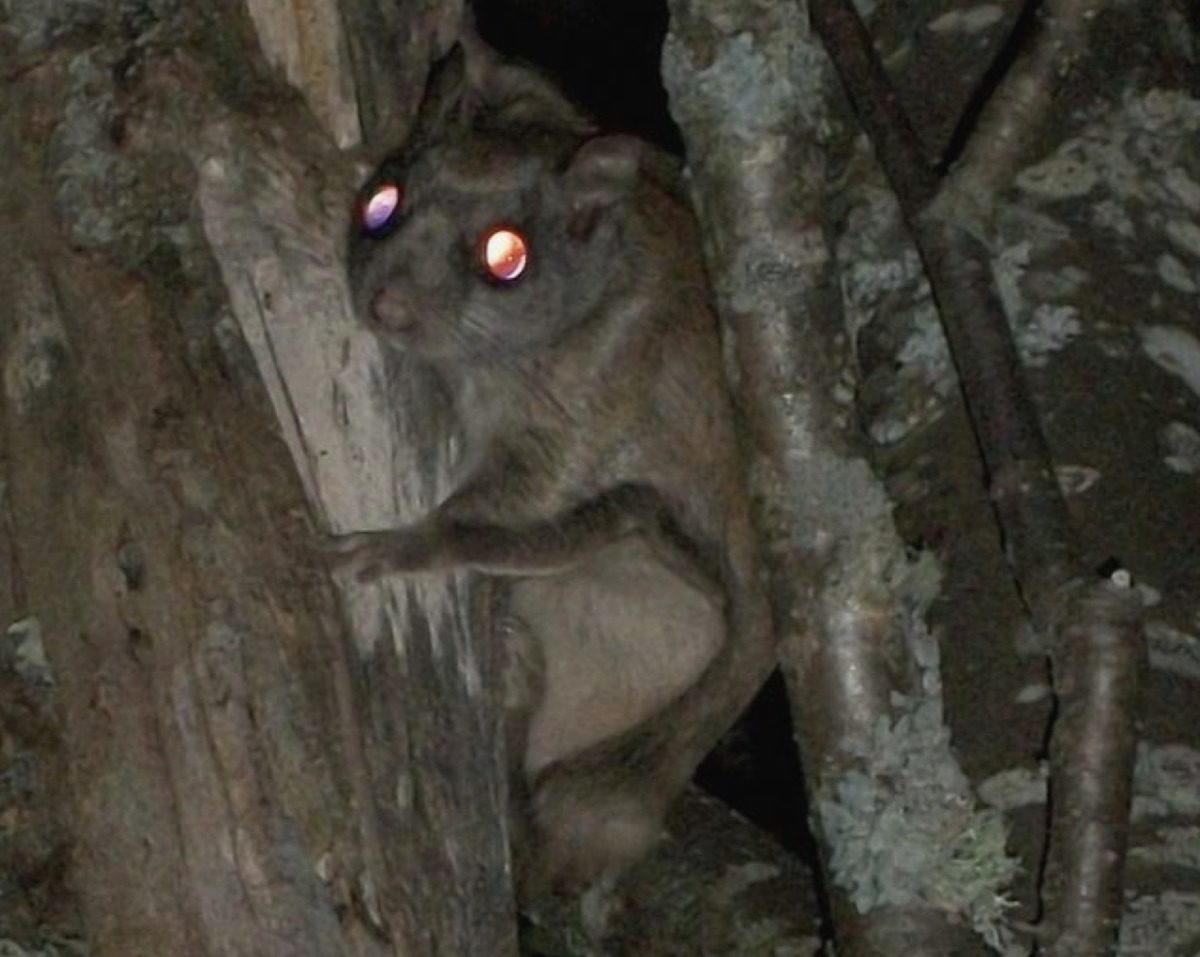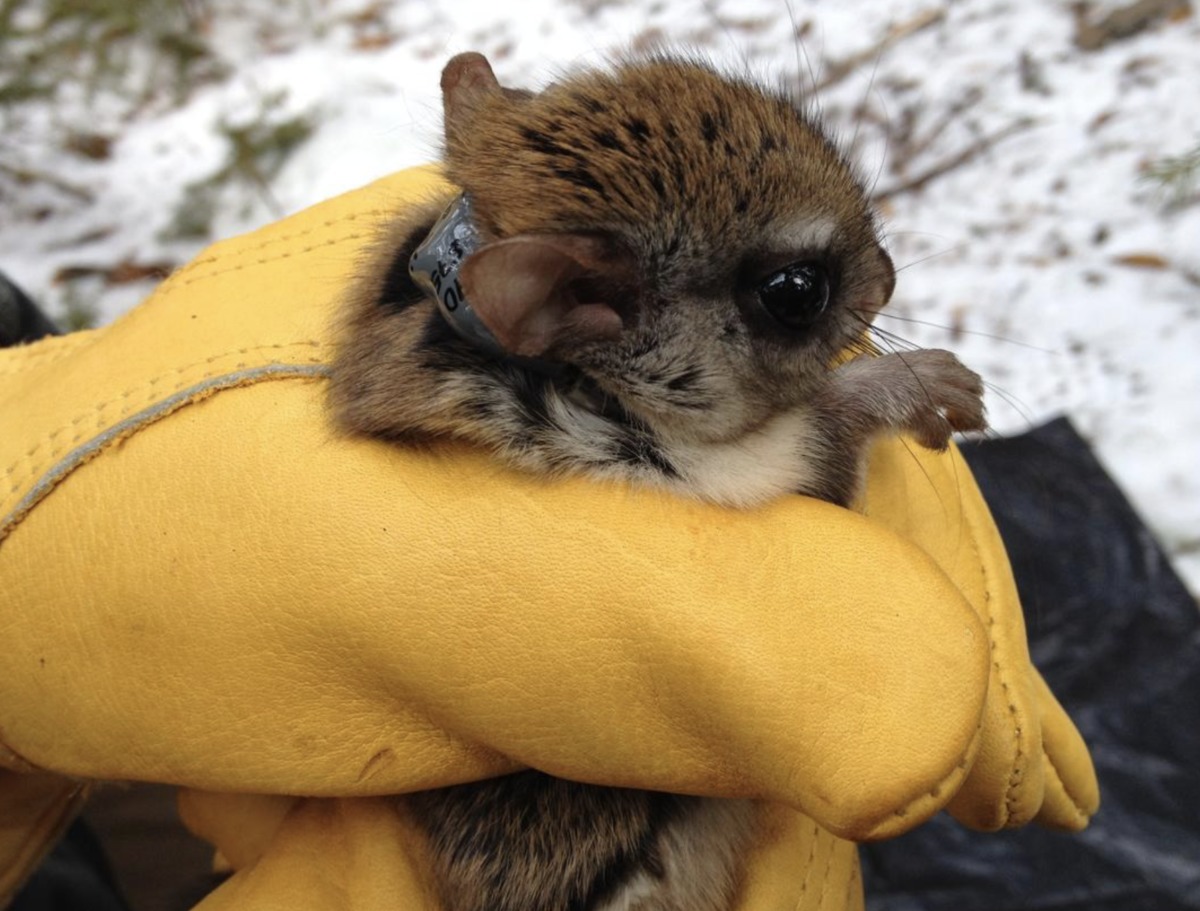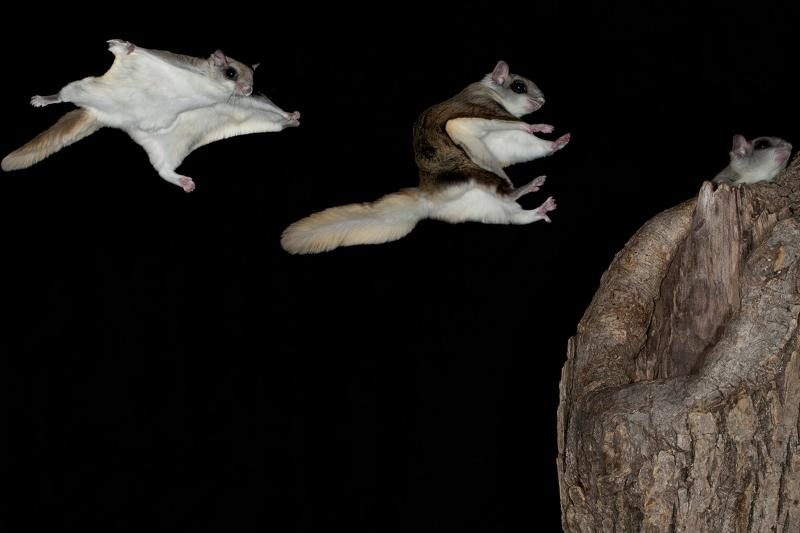Most non-gliding tree squirrels are active during the day, and because many squirrels have adapted to city life, squirrels like the western gray squirrel are commonly seen by many people. However, nocturnal flying squirrels are rarely seen by people, even though they are common throughout many forests. Even when we are outside at night, the cover of darkness can hide flying squirrels from us. If you want to see one, there are ways to improve your odds. A flashlight can reveal a flying squirrel's eyeshine at night (as is shown in the photo to the right).


Northern flying squirrels are small squirrels that live in mature coniferous forests in our Northern Yosemite region and elsewhere across much of the West. They make their homes in snags, woodpecker holes, nest boxes, and abandoned nests of birds and other squirrels. They are also known to be great sharers. Multiple squirrels will sometimes share nests to huddle together to keep warm during harsh winters. Huddling together for warmth can reduce their metabolic rate and body temperature to save energy during a time when food resources are scarce.
Flying squirrels are omnivores. They eat a variety of foods, including seeds, nuts, fungi, fruit, and insects. Southern flying squirrels on the east coast are considered one of the most carnivorous squirrels because they supplement their diet with eggs, birds, and carrion. At some of our wildlife cameras we have seen northern flying squirrels biting at our chicken-stuffed baited socks…. maybe southern flying squirrels aren’t the only ones willing to sampling meat when it’s available.


Flying squirrels should probably be more appropriately called “gliding squirrels” because they aren’t capable of powered flight like a bird or a bat. Flying squirrels are more like mini base jumpers! Recreation thrill seekers have designed base jumping suits to mimic flying squirrels’ gliding membrane. The suit and gliding membrane work to slow descent and allows the glider to change directions in the air! When a flying squirrel wants to travel to another tree without touching the ground, it launches itself from a high branch and spreads out its limbs so the gliding membrane is exposed. It uses slight movements of its legs to steer, and the tail can act as a brake upon reaching its destination. In a single glide, a flying squirrel can cover more than 150 feet. This means a 6-inch squirrel can glide across an entire soccer field in one leap!
When our CSERC staff reviews photos taken at our wildlife photo-detection cameras in the national forest, for months we may not get a single photo of a flying squirrel. Then we may get photos of one or more at a number of sites that are located miles from each other. They clearly are widely distributed across our local region. Although they are reclusive and seldom seen, flying squirrels may be gliding from tree to tree right in your neighborhood or in the forest area where you’ll be camping this summer. If you ever are fortunate enough to get good photos of one, please share them with our Center.

